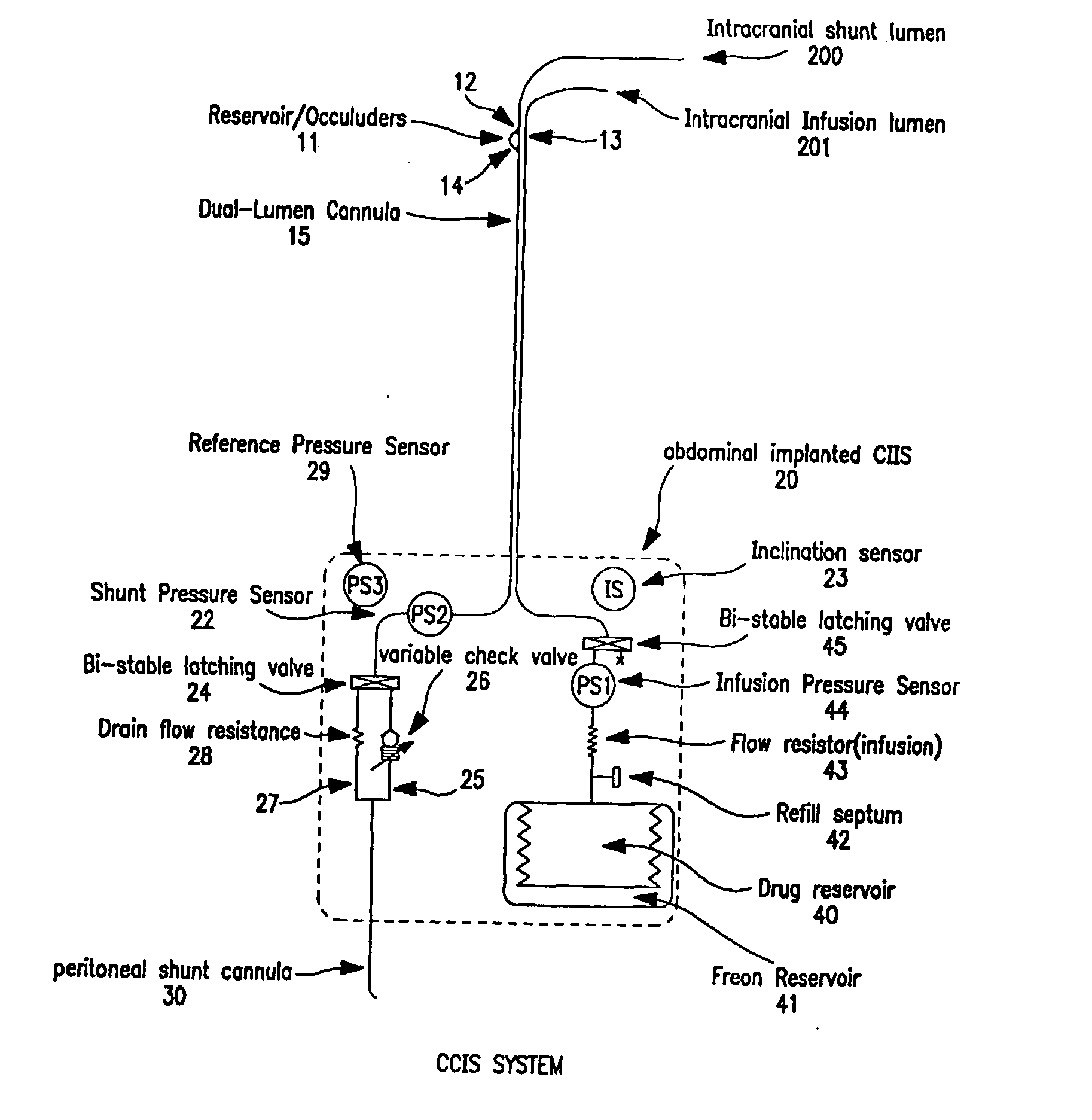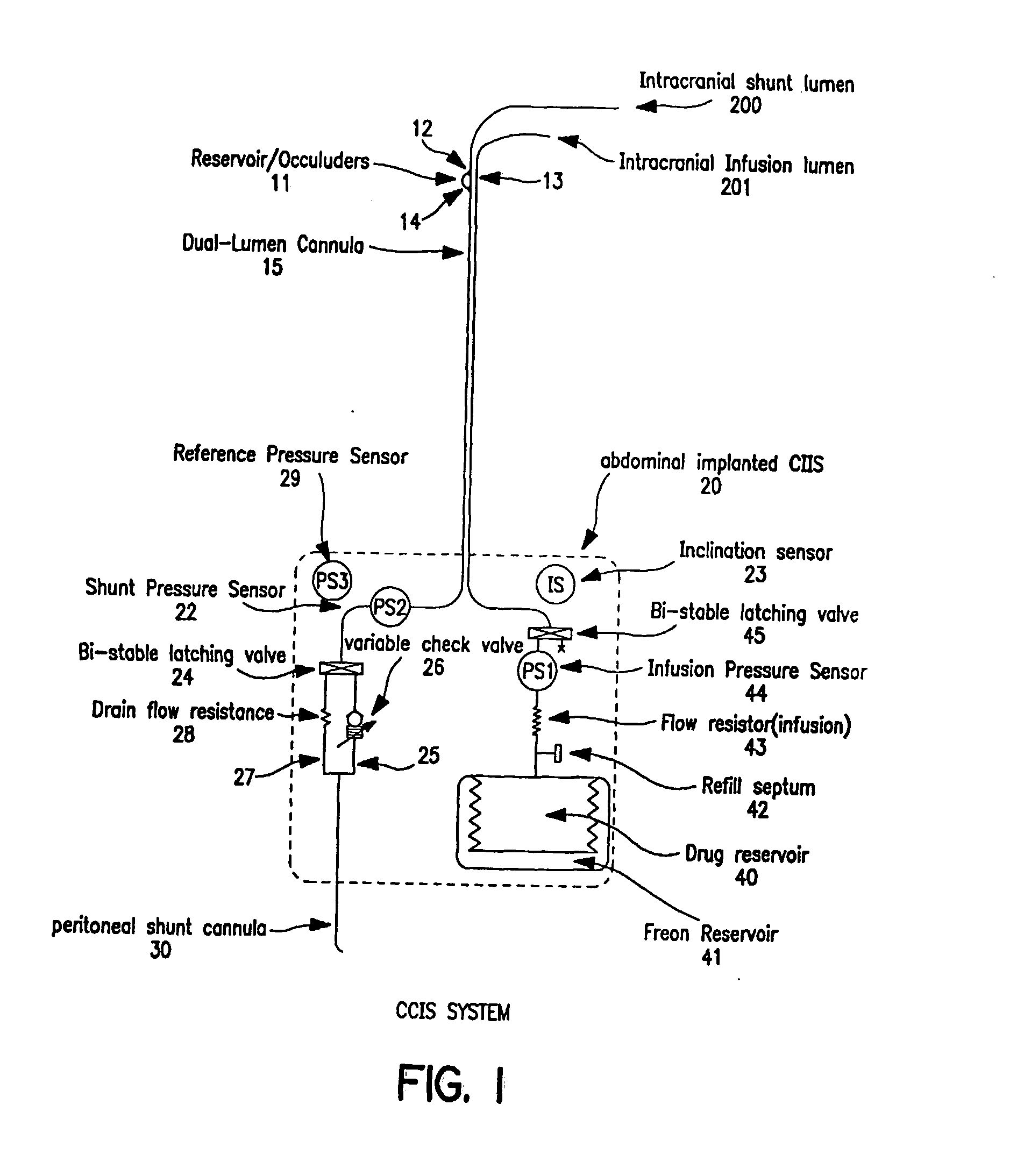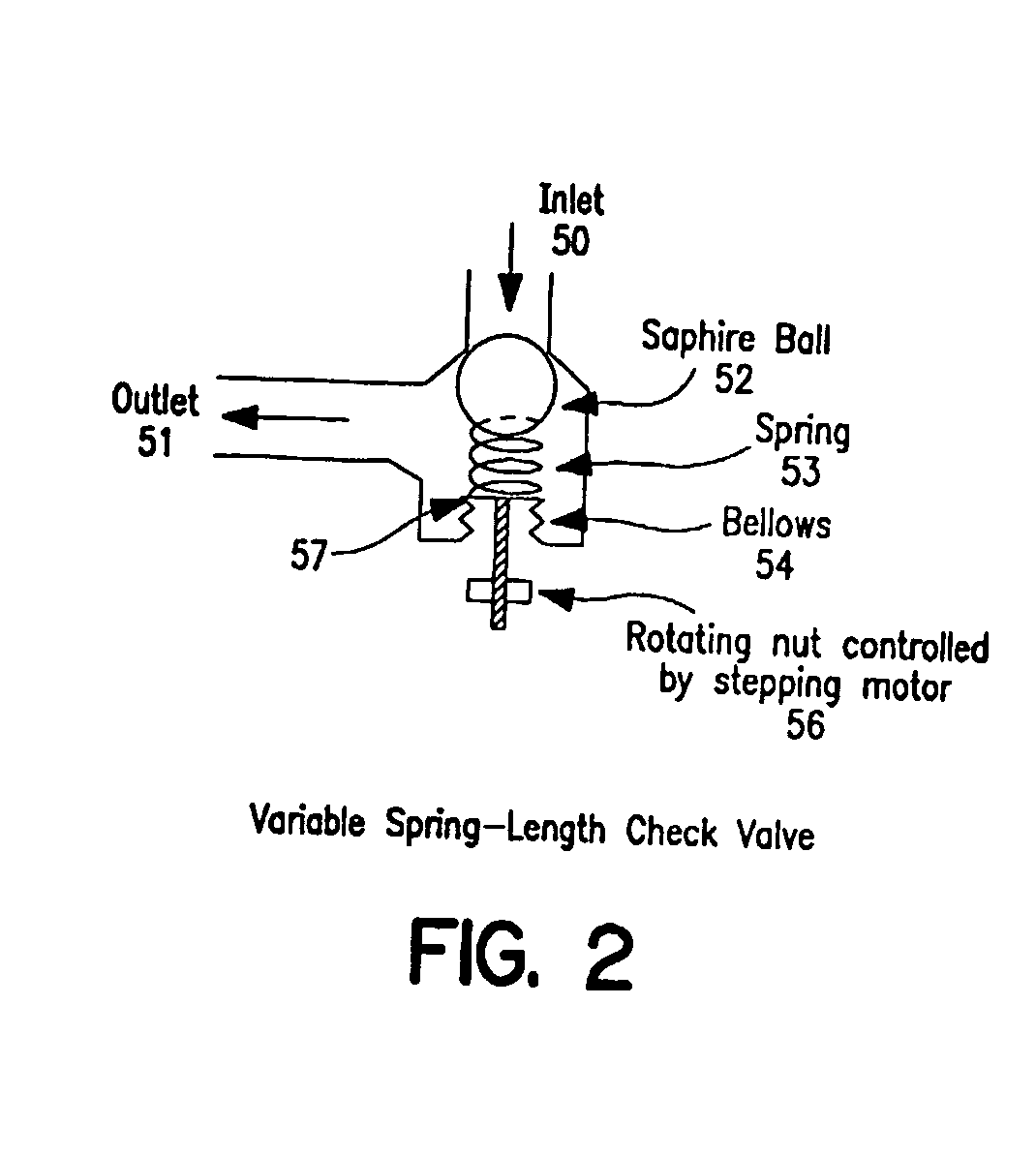Controlled cerebrospinal infusion and shunt system
a cerebrospinal infusion and shunt technology, applied in the direction of instruments, prosthesis, process and machine control, etc., can solve the problems of affecting the amount of csf that is drained, current shunt therapy devices are not designed to effectively treat over-drainage, and serious complications, so as to improve the csf turnover rate and more controllable physiological sink
- Summary
- Abstract
- Description
- Claims
- Application Information
AI Technical Summary
Benefits of technology
Problems solved by technology
Method used
Image
Examples
Embodiment Construction
[0023] The CCIS device is an implantable active battery operated device that is microprocessor controlled via algorithms stored in its memory. The CCIS device is a dual therapy system containing a programmable solution infusion device that is integral with a programmable actively controlled shunt system. The CCIS device can be implanted in the abdomen with an attached dual lumen cannula used for CSF infusion and for CSF shunting. A second shorter cannula attached to the CCIS device is used to divert the shunted CSF fluid into a suitable location, such as the peritoneal cavity in the abdomen.
[0024] In the preferred embodiment, the CCIS device contains a programmable lavage solution infusion system. A lavage solution reservoir is preferably within a pressurized container such that at body temperature, it produces a positive pressure. A refill septum can be provided, such as on the top surface of the device, so that the reservoir can be easily refilled, for example via a transcutaneou...
PUM
 Login to View More
Login to View More Abstract
Description
Claims
Application Information
 Login to View More
Login to View More - R&D
- Intellectual Property
- Life Sciences
- Materials
- Tech Scout
- Unparalleled Data Quality
- Higher Quality Content
- 60% Fewer Hallucinations
Browse by: Latest US Patents, China's latest patents, Technical Efficacy Thesaurus, Application Domain, Technology Topic, Popular Technical Reports.
© 2025 PatSnap. All rights reserved.Legal|Privacy policy|Modern Slavery Act Transparency Statement|Sitemap|About US| Contact US: help@patsnap.com



